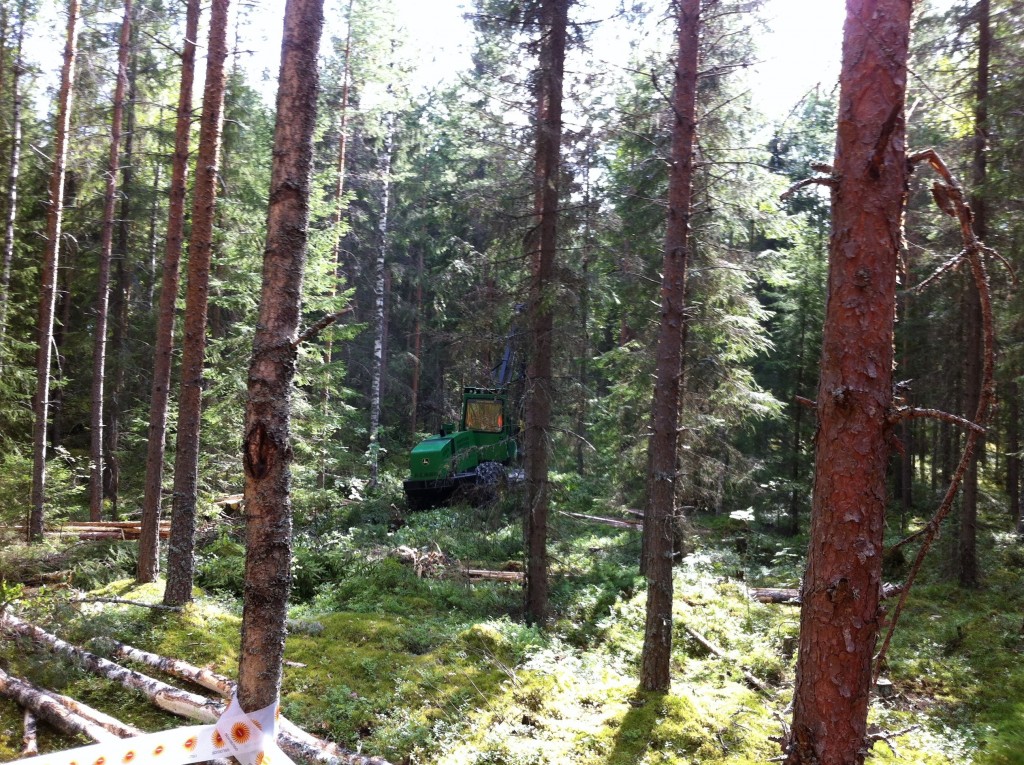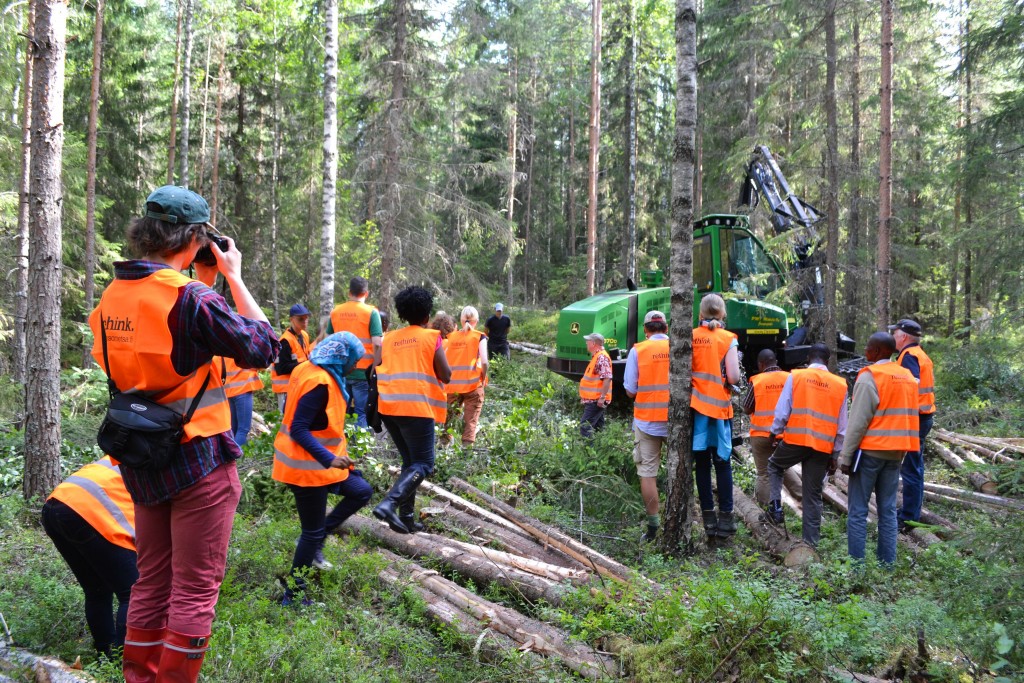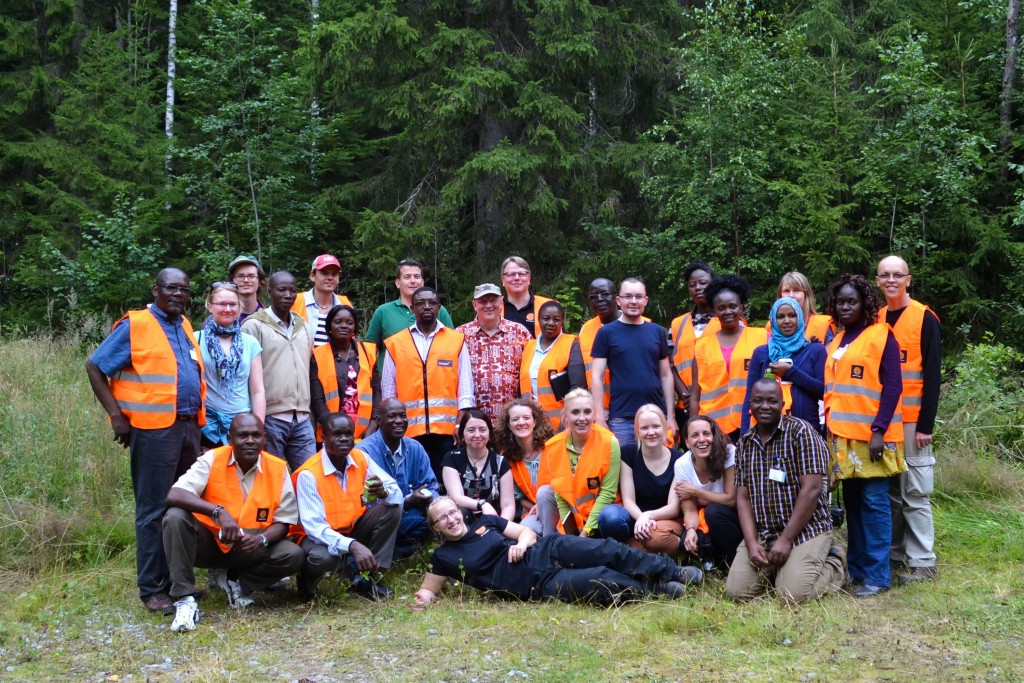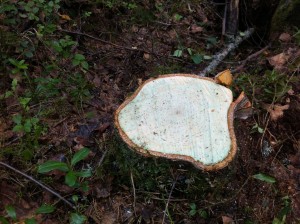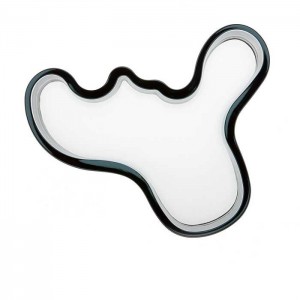The Managing Sustainable Forest Landscapes 2015 summer school has successfully commenced! Yay! The first day started (in spite of some belated confused students like us having trouble navigating their way around the campus) with an introductory lecture by Markku Kanninen, who told us about the general global trends in forestry and beyond. With the introduction to the course we got started with a couple of themes that will be developed throughout our class program.
Fobissie Kalame shared his experience of being a REDD+ negotiator- a job requiring the patience of a saint and a mind of a poker player.
Thus emerged one of the first themes to be developed in some detail in our course. International cooperation, or in some cases lack thereof, in forest preservation and development. Dr. Fobissie Kalame gave a thorough description of the delicate nature of negotiating the implementation of REDD+. He detailed the fine line to be walked between rewarding nations that are active in tropical forest clearing for not cutting, and supporting nations that are developing more comprehensive reforestation and preservation strategies that are laudable but may have a smaller carbon impact. Add to these factors that all decisions need to be unanimous, and a fraught decision making environment is inevitable. This set the stage for looking at local forest management practices on a global scale, and prepared us to look at Finnish forest practice with this global context as background.
The highlight of the day was the be beginning of the field trip to Hyytiälä forest field station, starting with the visit to the logging site operated by Stora Enso, one of the biggest producers of wood, paper, packaging and biomaterials in the world. In addition to some nice coffee and Finnish bakery we got to see high forest technology in action as a JD 1070 Eco III forestry machine demonstrated selective cutting in a well developed mixed birch, spruce and pine forest. This was an industrial process done by machinery but nevertheless requiring substantial theoretical knowledge and skills on behalf the John Deere harvester driver.
We saw how the machine allowed for selective culling of individual trees for lumber or fiber, adjusted log cut length, saved slash for depositing on the machine trail to help prevent soil compaction and applied root stop to prevent spread of disease. This was all in one integrated cutting process. We also learned about the relationship between forest land holders, forest products harvest companies and forest products manufactures which creates an integrated system that is efficient, mutually profitable and creates zero waste through the supply chain.
The Eco III in action
https://www.youtube.com/watch?v=oFd2azkA3Eo
For Lusine, with a background in environmental sciences and outdoor recreation, it was very refreshing to visit a forest harvesting area, since within the dominating discourses of this field, logging industry and forest harvest sites are something mostly portrayed negatively. This is also not surprising, since deforestation continues to be a persisting environmental problem globally, often harming tourism opportunities, while forestry (legal or illegal) and outdoor recreation do not usually go hand in hand. From this perspective, Finland is one of the few countries in the world where the forestry industry has truly high quality standards, being implemented in accordance with strict environmental and social regulations. This is a place where you can look at the fallen trees without experiencing the inevitable sadness imagining possible damage done to nature, something which became almost a reflex among environmentalists around the globe. Put this into a context of high economic development, high living standards and low levels of corruption in the country, and you get a sustainable forestry sector generating benefits for all, while remaining the backbone of the economy.
What is also noteworthy is that Finnish forestry is based on three main tree species (pine, birch, spruce), making it comparatively easy to manage. It is clear that these high operation standards of the forest sector are possible as an outcome of a combination of a number of environmental and socio-economic factors, which makes this example difficult to directly transfer to other places. It has to be kept in mind, however, that intensive forestry, even the most sustainable, also comes with a cost, such as disappearance of old growth forest ecosystems, which Finland is relatively short on. Getting to know the job with Stora Enso, operation site and the information from the employees while sipping on some coffee with pastry gave us new interesting first-hand insights into the Finnish forestry business and made a great start of the course!
A happy group after coffee…
An emerging theme of the afternoon, that was particularly surprising and revealing for Carl, had to do with how prevalent the role of the forest is in the lives of everyday Finns. It is almost as a national stereotype that Finns were “forest people.” (eg. see image below) What the afternoon revealed, on our well narrated bus ride courtesy of Prof. Markku Kanninen, was how extensive forested lands are in Finland, how diverse the management goals and methods can be and just how many Finns are personally involved in aspects of forest life. While the farms and forests on our route were small by the standards of many international land use practices, the mosaic type landscape showed extensive forest based investment, with diverse involved management techniques and almost all farms having associated forest lands. The pattern is significantly effected by the fact that nearly a million Finns own forest lands, about 2/3rds of forest are owned by private landholders and the average lot size is 30 hectares. On a cultural level 50% of Finns pick forest berries at least once a year, and 20% practice recreational Silviculture. These statistics amazed Carl at first, because the lot size seems relatively modest and the number of forest holders means that nearly one in every five Finns owns forest land. On further reflection though it makes sense that a nation with so many people literally invested in forest property would be culturally, economically and emotionally invested in preservation of healthy forest ecosystems and that policy, public support and forest technologies would be extensively developed.
Finnish wood – Finish design
(I think the Iittala piece is said to be based on a lake…or is it really a trunk section)?
Carl & Lusine
